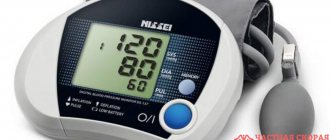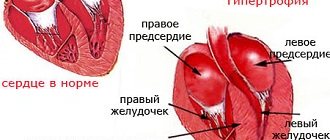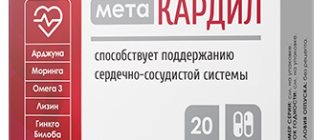Blood pressure in osteochondrosis
Causes of increased pressure
Any age of a person is susceptible to the possible occurrence of hypertension. Causes of high blood pressure:
- obesity;
- nervousness;
- night time;
- drinking strong tea, coffee;
- stressful state;
- cardiovascular diseases, etc.;
- alcohol, smoking;
- metabolic disease;
- disturbance of blood circulation;
- sedentary lifestyle;
- heredity.
Osteochondrosis develops for some reasons from this list. For example, increased weight and immobility for a long time cause degeneration of the vertebrae and intervertebral discs - this develops cervical osteochondrosis, accompanied by hypertension.
Onset of symptoms
To turn the head, the body uses movable cervical vertebrae. Any slight displacement of the discs compresses blood vessels and nerve endings, which leads to increased blood pressure.
Dystrophy, protrusion, disc herniation, vertebral osteophytes disrupt the normal flow of blood into the brain tissue, where the center that regulates blood pressure and heart rhythm is located. It follows from this that osteochondrosis affects circulatory disorders, the cardiovascular system, and causes hypoxia of the center of blood pressure regulation. With a lack of oxygen supplied by the blood, stimulation of the center begins with impulses, as a result of which blood pressure rises sharply.
At the initial stage of osteochondrosis, inflammation appears in the spinal region, which causes pain and swelling in the intervertebral spaces, pressing on the vessels and nerve bundles. This leads to an increase in impulses between the brain and spinal cord, which increase adrenaline, and blood pressure increases accordingly.
With osteochondrosis, the neck muscles tense reflexively, which gives an additional release of adrenaline with a subsequent increase in blood pressure.
Osteochondrosis is not always the cause of its increase, but it is very similar in its pronounced symptoms. This can be seen in complications of diseases:
- disruption of vascular blood flow;
- DEP – damage to the blood vessels of the brain;
- VBI - impaired blood circulation in the vertebral arteries reduces the functions of the brain of the head.
A severe form of hypertension can occur due to pathological changes in the spine, which contributes to the body's resistance to treatment and also leads to a hypertensive crisis.
Features of treatment
Characteristic signs of high blood pressure are pain in the head and neck, as well as dizziness, nausea, and numbness of the tongue.
Cervical osteochondrosis with high blood pressure is difficult to treat with NSAIDs, as there is a possibility of complications.
The main methods of treating osteochondrosis eliminate:
- neuromuscular symptoms;
- increased blood viscosity;
- vascular angiodystonic syndrome;
- violation of blood circulation, metabolism, sympathetic regulation of the brain.
With osteochondrosis, physiotherapy and spinal massage can sometimes provoke an increase in blood pressure.
Most often, drug treatment is prescribed for this disease with symptoms of hypertension. Drugs are selected individually, depending on the causes of the disease and drug tolerance:
- Lisinopril + Amlodilin - the drug Equator, prevents cardiovascular pathologies, reduces the risk of high blood pressure;
- Mydocalm - improves muscle tone in the cervical region;
- Cavinton is a medicine that has a vasodilator, antiaggregation, and antihypoxic effect. A preparation was made based on the vinca alkaloid;
- Drugs that eliminate cerebral symptoms.
They may also recommend wearing a Shants collar to relieve stress on the cervical vertebrae.
Manual therapy normalizes anatomical relationships. Exercise therapy restores the vertebrae, eliminates spasms, improves blood flow, and reduces blood pressure. The use of folk remedies also helps lower blood pressure. Author: K.M.N., Academician of the Russian Academy of Medical Sciences M.A. Bobyr
Circadian rhythms of blood pressure
Blood pressure is one of the most important indicators of the state of the cardiovascular system and, along with other physiological parameters, constantly changes against the background of a person’s daily life and sleep.
When studying the daily level of blood pressure, it turned out that fluctuations in blood pressure even in healthy individuals aged 20-60 years can be at least 20% of its average value, reaching 20-30 mmHg during the daytime, and 10-20 mmHg at night, and Exceeding these levels in arterial hypertension is associated with target organ damage.
As is known, the rhythm of physiological processes is one of the fundamental properties of living matter (cells, tissues, organs), which appeared as a result of the evolution of adaptation of life forms to the environment. The unique mechanisms of the rhythm of biological processes (including fluctuations in blood pressure) in people are inherited and controlled by the work of the so-called. "biological clock".
One of the main components of daily fluctuations in blood pressure is the daily or circadian rhythm. And since most people adhere to a fairly regular routine of the “activity-rest” cycle, the occurrence of peaks and valleys in their circadian rhythm during the day is very natural and predictable. Therefore, this blood pressure rhythm is often represented by a biphasic pattern with the highest blood pressure values during the daytime and a distinct nighttime decrease during sleep. During the day, it is often possible to identify two pronounced peaks of increased pressure: morning (9-10 o'clock) and evening (about 19 o'clock). The lowest pressure figures are usually observed in the range from 0 to 4 hours, after which a gradual increase in its level is observed before waking up from 5-6 o'clock in the morning and reaching more stable daytime values by 10-11 o'clock. Nighttime blood pressure fluctuations are closely related to different stages of sleep. Thus, a decrease in pressure around 3 a.m. is associated with the deep phase of sleep, which accounts for 75-80% of its total time and predominates in the first half of the night period. In the second half of the night, superficial sleep predominates, which is combined with short-term moments of awakening. The increase in pressure during this period is 5% of the average pressure. A pronounced increase in pressure in the period from 4 to 10-11 hours from the minimum night values to the daytime level is also observed in healthy individuals, but its high values are characteristic of arterial hypertension. This period is characterized by the physiological activity of the sympathetic nervous system, which is responsible for vasoconstriction and an increase in heart rate. The morning period is also the only time during the day when an increase in blood clotting is observed. In this regard, morning values of cardiovascular system indicators are the most dangerous in relation to heart attacks and strokes.
Irregular pressure fluctuations during the day are random in nature, aimed at maintaining blood flow in the tissues at a sufficient level. Such changes can be noted as a result of the influence of various external factors: environmental conditions, body position, food composition, nature of physical activity, consumption of alcohol, table salt, caffeine-containing drinks (tea, coffee), smoking and individual characteristics of the body (age, gender, heredity, personality type, mood, etc.).
It has been established that the process of continuous repeated measurement of pressure during the day is more prognostically significant and informative than one-, two- or three-time measurement of pressure by the patient independently or at a doctor’s appointment. After all, clinical (real) blood pressure is the average value, most often from three or four consecutive determinations over short periods of time, and such one-time pressure measurements constitute a minimal part of all values of this indicator, making it almost impossible to get a complete picture of the daily blood pressure rhythms . In addition, pressure measurements by the patient or doctor themselves can be distorted by different levels of amplitude of sound vibrations of the human ear, too rapid release of air from the cuff, the habit of rounding results, fatigue of medical staff at the end of the day, the patient’s anxious reaction to the very stay in a medical facility and the measurement procedure ( the so-called “white coat effect”).
A more accurate assessment of the individual pressure level occurs when using methods of daily monitoring (measurement) of pressure. The main device for making such measurements is currently a Holter monitoring . Pressure readings are measured here on an automatic programmable recorder for 24, 12 hours or any other time period at the discretion of the doctor and patient. During the study, a special shoulder cuff with a microphone is installed at the level of the lower third of the shoulder, 2 cm above the pulsation zone of the brachial artery. The outlet tube is thrown over the shoulder, cervical-collar area and fixed on the opposite side of the body on the patient’s belt to the recorder. Wearing the device throughout the day does not pose any particular inconvenience to the patient, but requires recording the daily routine in a special diary (sleep, rest, taking medications, physical activity, pain and other symptoms of increased blood pressure). After 24 hours, the recorder is removed. The verdict on daily blood pressure rhythms is made by the doctor at the functional diagnostics office based on blood pressure measurements at certain time intervals and comparison of the figures with the patient’s diary. A device for daily blood pressure measurement has been operating in the Stolbtsy Central District Hospital since 2009. A referral for this procedure is issued by a general practitioner (usually a cardiologist at a clinic). The introduction of this diagnostic study in the Central District Hospital made it possible to identify real pressure levels in patients, especially at night, differences in pressure numbers that are difficult to identify with a conventional single measurement, assess the effectiveness of medications and achieve target (necessary) pressure levels in people even with previously uncontrolled changes pressure. The question remains relevant about the desire of patients themselves to identify their individual pressure levels, because until now this remains the desire only of the treating doctor.
Cardiologist I.L. Lutik
The problem of modern pathogenetic intensive therapy for intracranial hemorrhages of non-traumatic origin is the most important in clinical neuroreanimatology, which is associated with a high prevalence, mortality rate, disability and social maladaptation of patients who have suffered hemorrhagic stroke [1-3].
Changing the position of the angle of inclination of the head end of the bed in neurosurgical patients is a generally accepted and proven method for correcting increased intracranial pressure (ICP) [2, 4, 5]. In intensive care practice, positions from 15 to 60° are used, but preference is given to 30° [2, 5, 6]. To date, there is no consensus on which position most effectively and significantly reduces ICP without reducing cerebral blood flow. It is generally accepted that for most patients with cerebral pathology, regardless of the etiological factor, a position of 15-30° is preferable. Early work carried out on patients with various brain pathologies confirmed the effective reduction of ICP at various positions of the head end in the range from 15 to 60° [5-7]. This position is justified from a physiological point of view, since even a slight elevation of the head end of the bed improves venous and liquor outflow from the cranial cavity and leads to a decrease in ICP [4, 5, 8]. However, the choice of the position of the angle of inclination of the head end in case of intracranial hemorrhage after surgery remains a controversial issue [6].
The purpose of the study was to study the nature of the relationship between hemodynamic parameters (ICP, cerebral perfusion pressure (CPP), mean arterial pressure (MAP) at different positions of the head end of the bed in patients with intracranial hemorrhage.
Material and methods
The study included 36 patients (11 men and 25 women) with intracranial hemorrhages of non-traumatic origin aged from 16 to 65 years (average - 52.9±10.5 years). Upon admission and over time, all patients underwent multislice computed tomography (MSCT) of the brain. Of these, 27 were diagnosed with subarachnoid hemorrhage using MSCT angiography due to rupture of an arterial aneurysm of cerebral vessels, and 8 were diagnosed with hemorrhagic stroke with the formation of an intracerebral hematoma of hemispheric localization. All patients were operated on on the 1st day from the onset of the disease. Treatment of patients was carried out taking into account the indicators of multimodal neurophysiological monitoring of ICP, blood pressure, CPP, cerebral blood flow (CBF) using transcranial Dopplerography (TCDG). ICP was measured using parenchymal sensors (Codman Microsensor “Johnson & Johnson”, USA). The sensor was installed on the opposite side of the lesion (on the intact side). The parameters of ICP, BP, and CPP were recorded using Philips MP 40 and MP 60 bedside monitors. Data were collected through an analog output on a personal computer and analyzed using the ICM Plus program. Radial artery catheterization was performed to measure invasive blood pressure. The invasive blood pressure sensor was placed at the level of the external auditory canal (in the projection of the foramen of Monroe) in order to correctly measure CPP. Doppler examination was performed according to standard methods using the Sono Scape S8 apparatus. When conducting a test with a change in the position of the head end of the bed, three consecutive measurements were taken, each lasting 5 minutes in positions 30-0-60°; in all cases, the initial ICP did not exceed 25 mm Hg. The study began in the standard position of the patient, when the angle of inclination was 30°. Subsequently, following the research algorithm, the patient was given a horizontal position with subsequent elevation of the head end to 60°. After stabilization of the condition at each point, the parameters of average ICP, blood pressure, and central pressure were recorded for 5 minutes. The study was carried out on days 1, 2, 3 and 5 after surgery. The criterion for inclusion in the study was survival of the operated patients for at least 1 week from the onset of the disease.
Statistical processing of the obtained data was carried out using the Statistica 6.0 software package in accordance with the main objectives of the study. The normality of the distribution of variables was checked using the Shapiro-Wilks method. Parametric and nonparametric statistical methods were used for analysis. Data are presented as medians and quartiles.
Results and discussion
Starting from the 1st day from the onset of the disease, a gradual increase in intracranial pressure figures was observed (Table 1)
.
The recorded ICP values in the standard position of the head end of the bed of 30° increased sharply and by the 3rd day of monitoring reached 27 (22-33) mm Hg, increasing by 22% compared to the initial parameters.
The greatest differences in ICP threshold values were recorded on the 5th day after surgery - on average 27% compared to the 1st day (from 21.5 (19-24) to 27 (20.5-36) mm Hg by the 5th day). At the same time, according to invasive monitoring data, the average ICP numbers from the 1st to the 5th day increased insignificantly. A sharp decrease in CPP was observed already on the 2nd day from the onset of the disease. Its values decreased by 18% compared to the initial ones - from 89.5 (84-101) to 73.5 (63.5-84) mm Hg. Further, the CPP indicators gradually increased, but by the 5th day they did not reach the initial level, equaling 83 (69.5-88.5) mm Hg, and on average became 7% lower than on the 1st day.
Also on the 2nd day there was a decrease in mean arterial pressure: from 105 (97-120.5) to 91 (81.5-100) mmHg, which was on average 13% lower than the initial values. Subsequently, the blood pressure readings began to gradually increase, but never reached the initial level, amounting to 97.5 (89.5-105) mm Hg. on the 5th day. Thus, the difference in the recorded blood pressure values between days 1 and 5 was 7%.
When performing a sequential change in the angle of inclination of the head end of the bed (30-0-60°) on the 1st day, the maximum ICP values (18 (16-22) mm Hg) were recorded in a horizontal position (Table 2)
.
ICP figures in the horizontal position were 33% higher than at 30 and 60°.
There were no significant differences between the 30 and 60° positions, and the average ICP values were 12 mmHg. The minimum CPP values on the 1st day from the onset of the disease were recorded in the 30° position, but did not differ significantly from the CPP figures in the horizontal position - 86 (78-99) and 87 (79.5-99.5) mm Hg . respectively. At the 60° position, the CPP was on average 5.5% higher than at 30° - 91 (81.5-99) mm Hg.
It was also noted that in a horizontal position in patients with non-traumatic hemorrhages, blood pressure increases by 5%, approaching 103.5 (98-117.5) mm Hg. At the same time, at the 30 and 60° positions the differences were insignificant: 98 (90.5-111) and 101 (94.5-113.5) mmHg. respectively. Thus, on the 1st day from the onset of the disease, the position of the head end of the bed 0° was the least preferable, since in this case a pronounced increase in ICP values was observed in combination with minimal perfusion of the brain parenchyma. The 60° position should be considered the most favorable on the 1st day after surgery, since it was in it that optimal CPP values were observed, ICP values remained relatively stable and the blood pressure level increased slightly (on average by 3% compared to the 30° position).
On the 2nd day from the onset of the disease, a similar pattern was observed: when the position of the head end of the bed changed from 30 to 0°, the maximum ICP and critically low CPP were recorded in the horizontal position: 20 (16-25) and 71.5 (60-83) mm Hg respectively. However, at the 60° position (compared to 30°), ICP was increased by an average of 3%, and CPP decreased by 5.5%. Blood pressure values were maximum in the horizontal position - 91.5 (83.5-105.5) mm Hg; When the head end of the bed was raised, the blood pressure readings remained stable. Thus, on the 2nd day from the onset of the disease, preference should have been given to an angle of inclination of the head end of the bed of 30°. It was in this position that optimal cerebral perfusion was ensured and intracranial hypertension did not increase.
On the 3rd day after surgery, there is a critical increase in ICP (an average increase of 7-14 mm Hg) in combination with low cerebral perfusion (a decrease of 5-7 mm Hg) and high systemic blood pressure ( an increase of 4-8 mm Hg) were still recorded in a horizontal position (see Table 2)
. However, by the 3rd day the difference in the values of hemodynamic parameters in the 30 and 60° positions disappeared. Therefore, both of these positions can be considered optimal.
On the 5th day, the horizontal position of the patient was again the least preferable. At the same time, the increase in ICP in the 0° position became less significant (6-8 mm Hg compared to 8-11 mm Hg on the 1st day), however, a longer period of time was required to restore ICP values to the original numbers When recording CPP, the minimum values were recorded at 60° - 77.5 (69-89.5) mm Hg. At the same time, a significant decrease in blood pressure in the 60° position was observed: from 99 (90.5-107) to 94.5 (88-102) mm Hg. Thus, changing the angle of inclination of the head end of the bed upward to 60° was just as undesirable as keeping the patient in a horizontal position. The optimal angle of inclination again became 30°.
It should be noted that an increase in the ICP level in a horizontal position leads to the formation of a Doppler pattern of difficult perfusion, characterized by a relative decrease in the average linear blood flow velocity and an increase in peripheral resistance indices. According to M. Rosner et al. [6], an elevated position of the head end can effectively reduce ICP in only 1/2 of patients with neurosurgical pathology. In our study, on the 1st day from the onset of the disease, a significant decrease in ICP figures when moving from the horizontal to the 60° position occurred in 78% of patients. However, by the 5th day, an effective decrease in intracranial pressure when changing the angle of inclination of the head end of the bed towards its increase was registered only in 62% of patients.
Despite the different etiological factors, in patients with hemorrhagic stroke with the formation of intracerebral hematomas and patients with subarachnoid hemorrhages due to rupture of cerebral arterial aneurysms, no significant differences were found in the studied parameters.
The conducted research gave grounds to formulate the following conclusions.
In patients with non-traumatic intracranial hemorrhage, the maximum increase in ICP was observed starting from the 3rd day from the onset of the disease in combination with reduced cerebral perfusion. Starting from the 2nd day after surgery, continuous monitoring of hemodynamic parameters is advisable to avoid the development of uncontrolled intracranial hypertension and ischemic brain damage.
On the 1st day from the onset of the disease, an angle of 60° should be considered optimal, since it was in this position of the head end of the bed that optimal cerebral blood flow was maintained and intracranial hypertension syndrome did not increase. On the 2nd day, the angle of 30° became the most favorable, and by the 3rd day, the differences in the values of hemodynamic parameters in the 30 and 60° positions disappeared, and both of these positions were optimal. On the 5th day after surgery, an inclination angle of 30° again became preferred.
Considering the critical increase in intracranial hypertension and a significant decrease in cerebral perfusion when the head end of the bed is positioned at 0°, regardless of the patient’s length of stay in the intensive care unit, it is necessary to ensure the short duration and maximum painlessness of invasive manipulations, which are possible only when the patient is in a horizontal position (tracheostomy, catheterization of central veins, changing the endotracheal tube, etc.).










